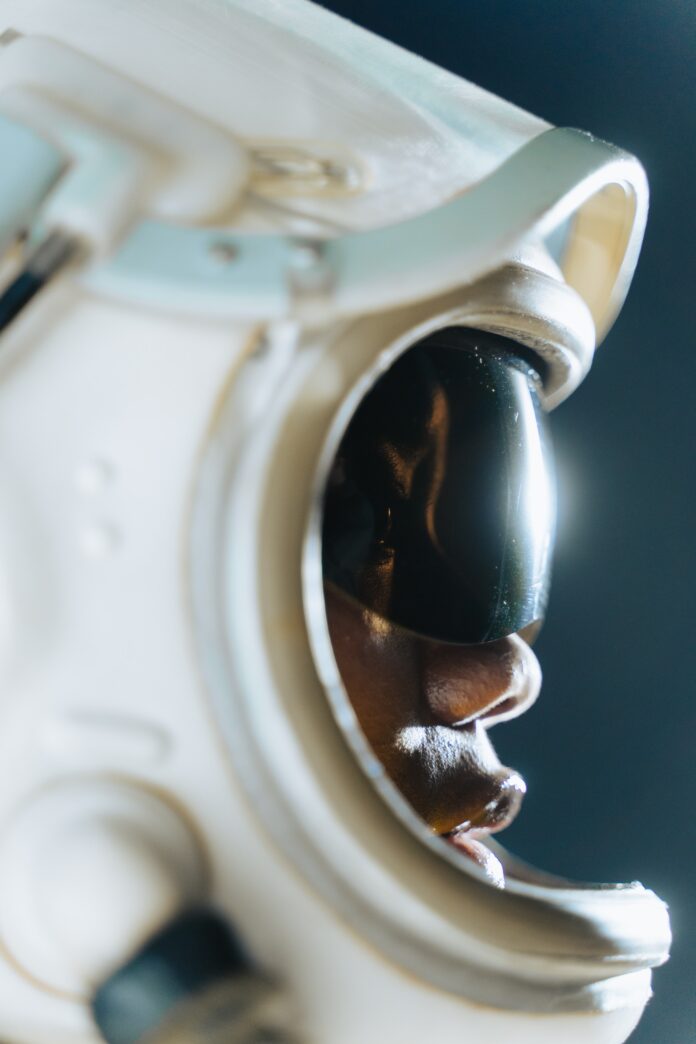
By Genoa Barrow, Word in Black
I recently heard talk show host/actress Whoopi Goldberg talk about her respect for late “Star Trek” creator Gene Roddenberry for allowing her to be a part of the franchise and for having the vision to acknowledge that there will indeed be Black folks in the future.
The sci-fi series famously went where no man had gone before, including a Black character, Lt. Nyota Uhura, played by the late Nichelle Nichols, as a member of the now iconic space crew. Goldberg, a lifelong fan inspired by Nichols, later joined the show in its “Next Generation” version as an intergalactic bartender and mystic.
Warp speed another three decades, and featuring African Americans in a space odyssey isn’t all that odd. The Smithsonian’s National Museum of African American History and Culture is highlighting Afrofuturism, described by writer Ytasha L. Womack as “an intersection of imagination, technology, the future and liberation.” Womack is among 20-plus writers and scholars sharing insights in a book the Smithsonian released March 21 titled, “Afrofuturism: A History of Black Futures.”
The book accompanies a new exhibit of the same name. The book is beautifully illustrated and features essays that explore Afrofuturism’s “power to engage in social change, challenge racism, and center Black voices, bodies, and experiences.”
The book considers “Black resistances to the false master narratives of Black inferiority, and to the racist hijacking of science and pseudoscience that sought to justify unjust systems that pockmark our nation’s history,” writes Kevin Young in the book’s foreword.
“Such resistances extend the African American motto of ‘lifting as we climb’ to the stars. Afrofuturism has long been a mix of celebration and resistance, musicality and theatricality, achievement and survival. Much of this mix-making and myth-making was through music, from the Negro spirituals down to jazz and gospel, funk and hip-hop. Afrofuturism further finds its way in the best of our writers, from W.E.B. Du Bois to Octavia Butler, Samuel Delany to Colson Whitehead, whose science fiction and alternate histories often explore slavery and its relation to the current day – while also championing the Black imagination,” Young continues.
The narrative that Blacks don’t exist in the future is a story told by other people. And as others try to recraft history for their own comfort, we must continue to be the keepers of our own image.
The book touches on film, television, comic books, fiction and more. Butler’s “Patternist” series from the 1970s gets a mention. The series followed a group of telepathic humans from ancient Egypt to the distant future. Womack’s “I Came to Africa on a Spaceship” talks about the short-lived, yet popular HBO series “Lovecraft Country,” created by Sacramento native Misha Green.
In the series, actress Aunjanue Ellis plays Hippolyta Freeman, a Black female astronomer in the 1950s who is brought up to a spaceship by a Black alien space goddess who shows her the wonders of a world beyond her imagination.
“From distant galaxies to the ocean’s depths, space is a defining feature of Afrofuturism,” writes contributor Tiffany E. Barber in the essay “Interstellar.” “To upend how the traumas of slavery, colonialism and imperialism continue to organize our sociopolitical present and future, Black makers and thinkers have long looked to space – outer space, inner space, cyberspace, the space – for room to grow, for more amenable geographies and species, and for places to hide and flourish. In Afrofuturist literature, music, dance, film, and visual art, space in all its forms represents sovereignty beyond earthly constraints,” she continues.
The book also highlights objects that visitors can find inside the massive D.C. museum, such as the Mothership that the legendary group P-Funk “landed” on stage during concerts, the costume Chadwick Boseman wore while filming “Black Panther” and Nichols’ red outfit from “Star Trek.” The real contributions of NASA mathematician Kathrine Johnson and former astronaut Mae Jemison are also acknowledged. From “Hidden Figures” to “stolen futures,” Trayvon Martin’s flight suit from space camp is also at the Smithsonian. The slain teen once dreamed of being an astronaut.
The narrative that Blacks don’t exist in the future is a story told by other people. And as others try to recraft history for their own comfort, we must continue to be the keepers of our own image. “Afrofuturism: A History of Black Futures” is us speaking our own truth: we’ve been here and will continue to be.
_____
“Afrofuturism: A History of Black Futures” is available at smithsonianstore.com or Amazon.com. For more information about the exhibit, visit nmaahc.si.edu.
The post Black To The Future … Forever appeared first on The Sacramento Observer.


